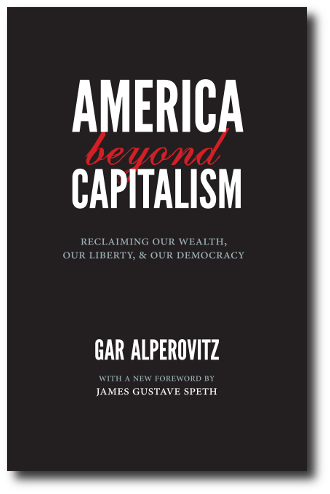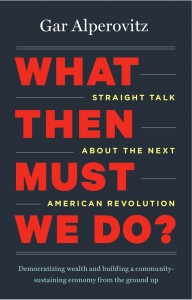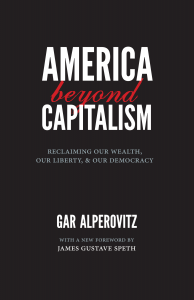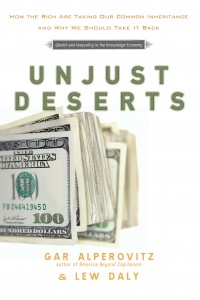From March 30th-April 1st 2012, the on-campus group Economy Futures, consisting of 18 committed Harvard undergraduates, hosted the Transition to a New Economy Conference. In a piece entitled “Young People Tire of Old Economic Models” on The New York Times website, environmental journalist Andrew C. Revkin provides excellent context within which to situate the Harvard conference. He quotes Rina Kuusipalo, one of the student organizers, who considers the event “an effort to create holistic alternatives to the current economic system — a discourse cracked open by Occupy Wall Street.”
Revkin’s article relies largely on the voices and opinions of young activists themselves, like Michael Sandmel, a senior at NYU:
Many of us study in mainstream neoclassical economics departments where interdisciplinary ecological-economics, and the questioning of G.D.P. growth as a primary (or, depending on who you ask, desirable) objective, is still very much fringe thinking. I don’t attempt to speak for all of my peers, but I know that many of us share an enormous frustration with the way in which our supposedly leading institutions teach us about the economy in a way that is myopic, ahistorical, and devoid of nearly any critical conversation about sustainability or human well being.
As Kuusipalo explains in Revkin’s article, “fifteen mentors, including Gar Alperovitz, a founder of the Harvard Institute of Politics and author of America Beyond Capitalism, ecological economist Josh Farley who works to measure happiness in Bhutan, and Juliet Schor, who used to teach Marxist economics at Harvard” participated as speakers in the conference designed to provide alternatives to the status quo in economic thought. She continues:
The dominant narrative says that environmental restraint must be limited and gradual, while social spending must be contained, otherwise the economy will not grow and we will all suffer. This kind of thinking is pervasive, dangerous, and outdated. Infinite growth in a finite world is impossible, growth based on speculative finance is unstable, and since the 1960’s, GDP growth and self-reported well-being have been completely uncorrelated phenomena. In this sense holistic, deep-reaching change of both thought, education and practice is needed. Indeed, we were brought together by an increasing realization that our global economic troubles aren’t just a few bad apples; the problem is indeed the apple tree.
Journalist Laura Flanders, host of GRITtv and The Nation blogger, attended the conference and interviewed its participants for Free Speech TV:
Video: Laura Flanders interviews Gar Alperovitz at the 2012 Economy Futures Conference
***
Both student activists quoted in Revkin’s piece mention the importance of The Occupy Movement as a force to push a systemic political-economic agenda forward. Sandmel notes that “[m]any of us have been involved in our local Occupy movements, including Occupy Harvard, and have been trying to use the crisis as an opportunity to push an agenda of plausible alternatives to unsustainable and inequitable finance-dominated capitalism.” Kuusipalo also explains that many of the conference’s organizers “spent considerable time at Occupy Boston in Dewey Square and also pitched tents here on Harvard Yard.”
A recent article in Dissent Magazine called “From Vietnam Summers to 99% Springs” by Paul Adler discusses some of the parallels between the two exciting eras of movement-building, the former having developed — in part — on Harvard’s campuses. Adler writes:
As with Vietnam Summer, the 99% Spring represents an attempt by more institutional and “mainstream” progressive individuals and groups to build on the excitement generated by a seemingly more spontaneous protest movement. By the spring of 1967 opposition to the war in Vietnam was expanding from its origin points among existing peace groups and college students. Yet, for a number of organizers, especially in more established groups, concerns persisted (not unlike those with Occupy) that some of the movement’s core characteristics were inhibiting its growth. In particular, they wondered how to get more of “middle America” involved, and others who found large public demonstrations unappealing or even actively discouraging. From such deliberations arose the idea of a coordinated drive to reach out to the wider public and expand the anti-war constituency. Inspired in part by the Mississippi “Freedom Summer” drive in 1964, these individuals, with a thirty-one-year-old Kennedy School fellow named Gar Alperovitz at their center, conceived of an organizing drive for the summer of 1967.
Adler links to an interesting article in the Harvard Crimson from May 1964, which goes into some of Alperovitz’s history within the anti-war movement then:
Alperovitz has been deeply troubled about the war for a long time. In October 1965, he resigned his post as legislative assistant to Senator Gaylord Nelson (D.-Wisc.) to work for the State Department. Hoping he could bring about small changes in U.S. war policy, he took the post of special assistant to the Assistant Secretary of State for the United Nations.
After ten months, he quite the State Department in protest against the war. By this time, he was already considering the possibilities for using the vast manpower resources available at colleges to build a local, political base.
…
Alperovitz told the students that the only way to translate their ideas into political action was to educate the voters in the district about the problem. Without constituents educated to their position, he reasoned, the Congressmen could never be expected to respond politically.
Taking his advice, Tocsin members addressed various church and fraternal organizations about the issues involved in Berlin. Lacking a word for what they were doing, the group’s members coined the term “Alperovitzing.”
…
That was the answer: canvassing, talking to people in their homes. Ten thousand people ringing millions of doorbells across the country could accomplish more than 10,000 public speeches.
…
It is a three-phase plan. First, people opposed to the war or with doubts about it are found through extensive canvassing. Second, once the people are found, they form discussion groups to deepen their understanding of the issues involved in the war. Third, with their studies complete, they undertake “basic political action.”
Adler writes that the Occupy movement can draw a “key lesson” from Vietnam Summer: “many of its key accomplishments arose not based on its exact goals, but rather from what Alperovitz described as its ‘open-ended process.’ If anything, Vietnam Summer shows that providing skills-building and some level of direction, while allowing everyday people considerable leeway in how to apply them, can generate power and positive results.”
He concludes:
Examples such as these suggest that the real victories of the 99% Spring may be hard to predict. But it seems entirely plausible that in a few months or even a year, individuals who gained concrete skills and built new connections via the 99% Spring will have started new campaigns and even organizations. They could revive the idea that, in the words of Martin Luther King, Jr. upon declaring his support for Vietnam Summer, “arrogant power can be made to yield to organized protest.”
 AMERICA BEYOND CAPITALISM
AMERICA BEYOND CAPITALISM



 Agenda
Agenda  Posterboard
Posterboard 